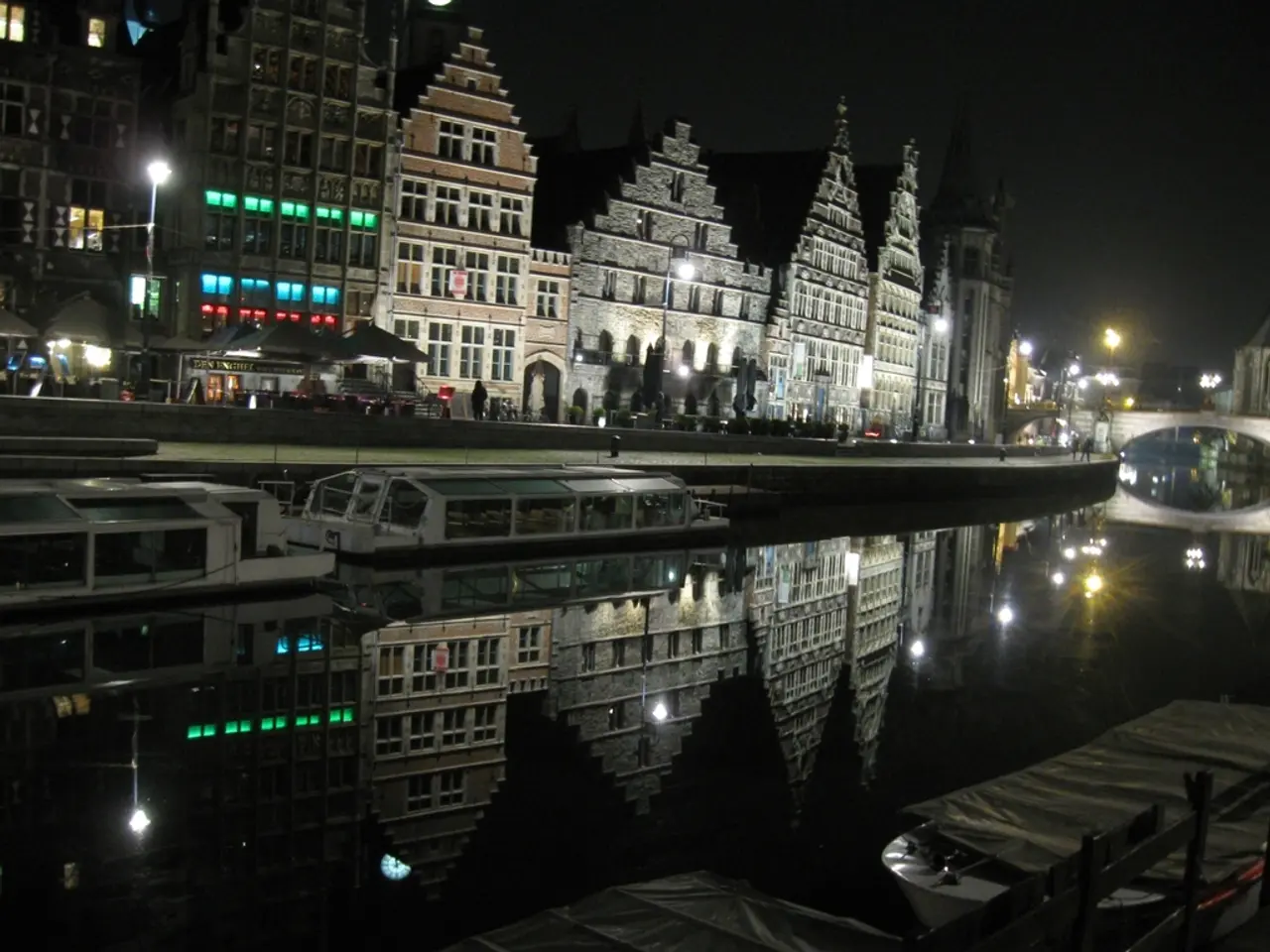Scene along the Frederik VII canal in Løgstør
In the picturesque town of Løgstør, nestled in northern Jutland, Denmark, stands a historical landmark that tells a tale of engineering prowess and economic growth - the Frederik VII Canal. Named after King Frederik VII of Denmark, who reigned from 1848 to 1863, the canal was constructed between 1856 and 1861 to improve access to the town's harbour, bypassing the shallow waters along the Limfjord coast.
The canal, approximately 4.4 kilometres long, 25 metres wide, and 3 metres deep, was dug on land, mirroring a bike path next to a main road. Its construction was primarily carried out by German workers, using shovels and wheelbarrows, a testament to the manual labour and engineering efforts typical of mid-19th century infrastructure projects.
Engineer Krohnke, who led the construction, made an interesting decision to pay his workers in specially minted coins that could only be used in his own shop. Today, these coins serve as a fascinating reminder of the canal's construction history.
The Frederik VII Canal played a significant role in the economic development of Løgstør and the surrounding region. By providing better navigation routes for larger vessels, it enhanced trade and fishing industries, facilitating the transport of goods and boosting local commerce. It also served as a strategic connection between inland waterways and the sea, positioning Løgstør as an important maritime hub.
Approximately 3,000 ships passed through the canal each year, contributing to the town's prosperity. However, by 1901, the canal had lost its significance due to technological progress. The breakthrough to the North Sea facilitated maritime trade, providing new opportunities for towns along the Limfjord.
Today, the Frederik VII Canal stands as a protected historical site. The canal keeper's house has become part of the Limfjord Museum, offering visitors a glimpse into the canal's past. The canal's oldest rotating bridge remains, occasionally operated for tourists, and the towpaths built on both sides of the canal for sailing ships to be pulled by horses are still visible.
The canal's proximity to the harbour, integration into the Limfjord Museum's program, the old revolving bridge, and the nearby bathing beach make it hard to miss. A visit to the Frederik VII Canal offers a unique opportunity to step back in time and witness the legacy of 19th-century Danish engineering.
Enjoying a stroll along the towpaths, one can appreciate the smooth blend of outdoor-living and home-and-garden surroundings, showcasing the historical charm of Løgstør. The calm waters of the Frederik VII Canal, once bustling with ships, now serve as a scenic pathway, reflecting the town's serene lifestyle.




